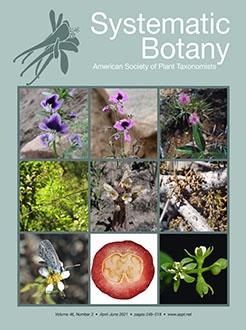Dwarf mistletoes are a lineage of morphologically-reduced stem parasites inhabiting Pinaceae and Cupressaceae throughout the northern hemisphere and equatorial East Africa. Though diagnosable by a suite of morphological traits, phylogenetic knowledge of species relationships has been limited to studies employing either comprehensive taxonomic sampling of one or two genes, or more sequence data from a limited number of individuals. We used data from genome skimming to assemble 3kb of the nuclear ribosomal cistron and up to 45kb of the plastome to clarify the phylogenetic root of the genus, monophyly of species, and relationships among infraspecific taxa. Genomic differentiation among terminal taxa was variable; however, we found strong support for reciprocally monophyletic New World and Old World lineages, congruent nrDNA and plastome topologies at the species level and below, and monophyly of most taxonomic sections and species. Plastome gene content was stable across the genus with minimal pseudogenization or loss, as in other hemiparasites, with the notable exception of cemA. These findings form the basis of our re-evaluation of historical biogeographical hypotheses, species- and subspecies-level taxonomy, and plastome evolution in Arceuthobium. More broadly, this work provides a foundation for future clade-focused comparative and biosystematics studies of Arceuthobium.
How to translate text using browser tools
11 August 2021
Plastome and Nuclear Phylogenies of Dwarf Mistletoes (Arceuthobium: Viscaceae)
Adam C. Schneider,
Kate M. Sanders,
Jacob H. Idec,
Yun Jee Lee,
Shawn C. Kenaley,
Robert L. Mathiasen

Systematic Botany
Vol. 46 • No. 2
April–June 2021
Vol. 46 • No. 2
April–June 2021
chloroplast DNA
genome skimming
nuclear ribosomal DNA




